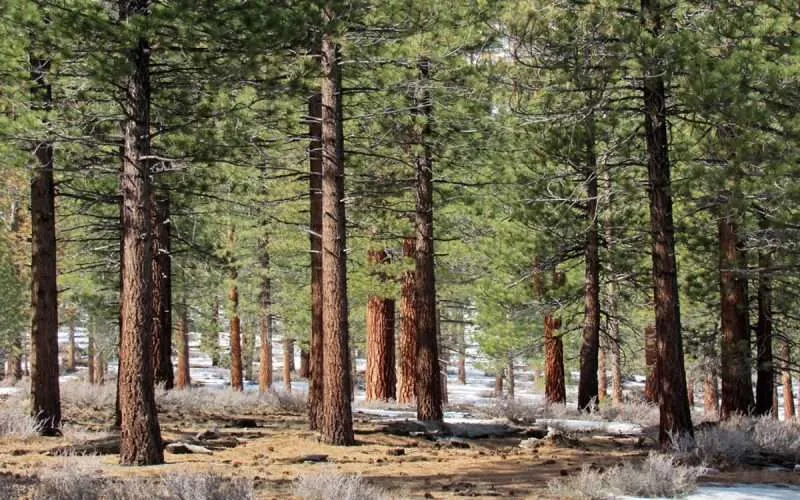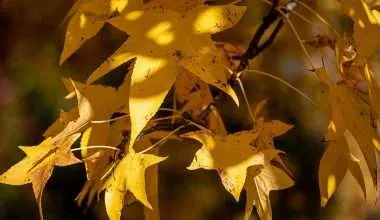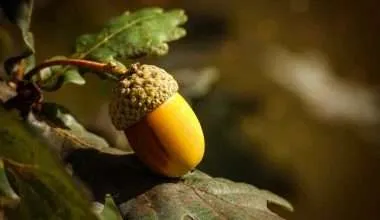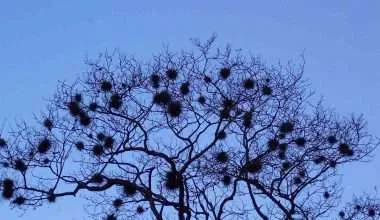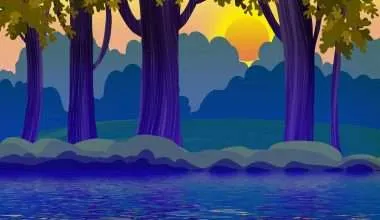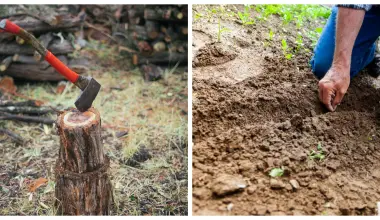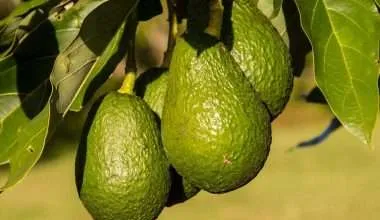Table of Contents Show
Hi guys, this is a long article full of information about Cedar trees because I’m passionate about them. I’d suggest looking into the table of contents to navigate through the article.
Being surrounded by nature is one of the most sacred feelings. Trees and plants bring lots of good energy with them.
If you are looking to add strikingly beautiful plants with lovely textural foliage, cedar tree cultivars are perfect for you.
Cedar Trees, native to the Himalayas, are widely dispersed in the Mediterranean and many other parts of the world with mild climates.
Cedars remain evergreen and the strong scent of a Cedar’s leaves is its most distinguishable quality.
They are marvelous trees with lots of cultural and ecological significance. Cedar trees are relatively pest and disease-free and available in various forms, sizes, and colors.
Read more about these tough trees, where they are commonly found, and their many categories.
What Do Cedar Trees Look Like?
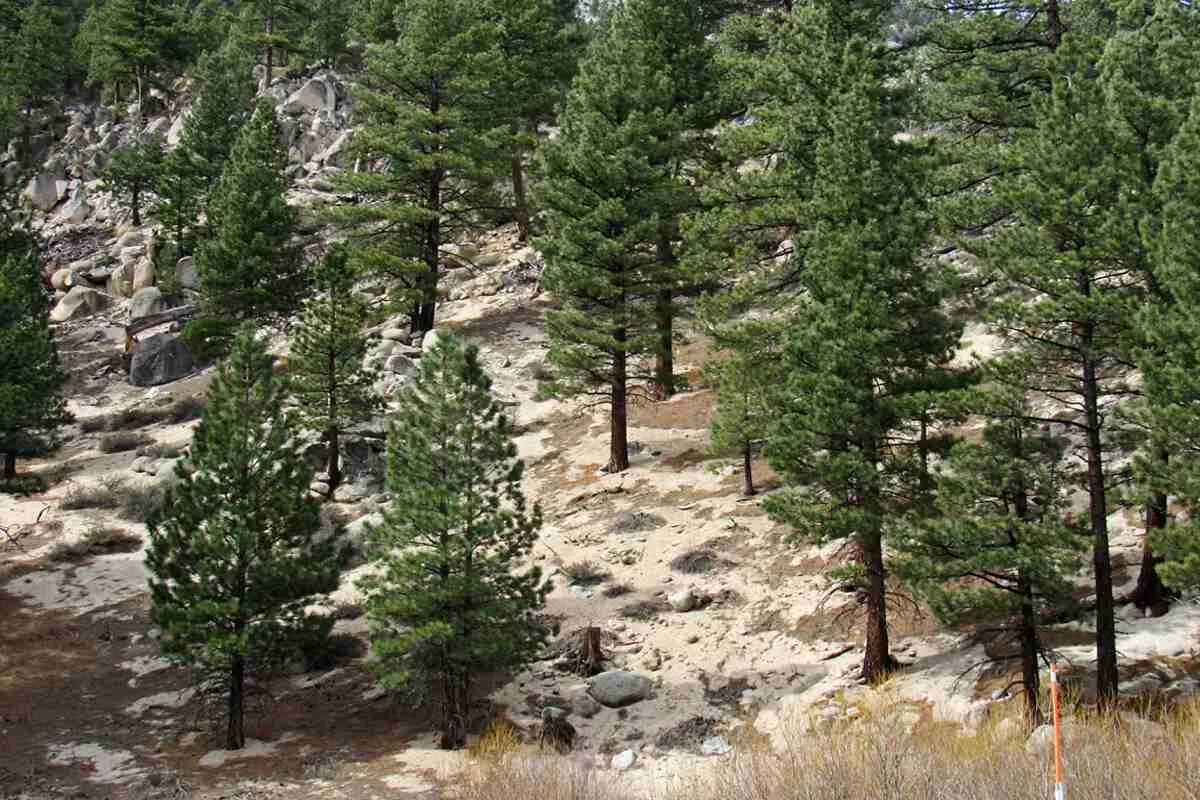
A cedar can easily be spotted by its unique cones. All genus Cedar tree members possess upstanding, barrel-shaped cones that are their distinguishing feature.
The cones of the male cedars are not that prominent as they don’t last on the tree for a long time. The female cones, in comparison, are extremely huge. They do not fall off until their seeds become fully ripe.
After ripening, the cones of the female cedar trees become weak and release the seeds that were stored in them. The seeds contain blisters with unsavory resin, known to scare off predators. Thus, in a way, protecting the tree.
They reach an astounding tall height, with average trees being 100 ft. or more. Cedars age gracefully, with some lasting several thousand years.
Their structure consists of towering shots that make up the branches followed by smaller shoots containing the majority of its needle load.
The needles of these trees support spiral clusters, that give them a beautiful appearance. The needles breed thick wax layers. Their thickness depends on the exposure of the tree during its growth period. The protective wax layer is a shield for trees from desiccation and sunburn.
Cedar trees have extending branches and needle-like leaves. A Cedar is also known for its cones that hang from its branches and hold its seeds. Aside from being beautiful, these trees are also beneficial.
Where Do Cedar Trees Grow?
Cedar trees typically grow in mountainous regions at high altitudes. They can be found in Asia’s western Himalayas and Europe’s Mediterranean. These trees are of the genus Cedrus family and members of the Pinaceae family.
All other cedars found in other regions are false cedar. The ones grown in North America do not belong to the same family and are not true cedar. While they are called cedar by some people, they are from the Cypress (Cupressaceae) family.
True cedars survive well in warm summers and cold winters. They are in Zone 6 to hardy planting areas. Expect Cedrus libani, cedar trees of Lebanon, that are a bit sensitive. The cedar trees in Lebanon are famous for being mentioned in historical texts for their divinity.
They thrive in well-drained soil as it is similar to the environment of their native conditions. Therefore, they are suitable for growing in the climates of the West Coast Mediterranean.
True cedar tree species also flourish in other hardy regions of the US.
A great example is the striking blue Atlas cedar, found in all its glory in New Jersey.
It is said that some of the cedar tree species overlap with each other. Particularly, the C. brevifolia is a potential kind of C. libani. However, there is no authentic source to prove it.
There is a lot more research needed to determine the genetic structure of cedar trees types. It would also make caring for cedar trees more convenient. Their tree family Pinaceae is also up for debate by some people.
Earlier, they were associated with the genus Abies, also called firs. But after some more research at the start of the 2000s, they came to be known as a part of the Pinaceae family.
13 Unique Cedar Trees Types
There are actually four true types of True Cedars. I’ll put in a spoiler here and mention two of them; Deodar and Cyprian cedar.
In any case, there are many different types called Cedar Trees. We will be discussing the 13 most popular types of Cedars in detail.
1. Deodar Cedar (Cedrus Deodara)
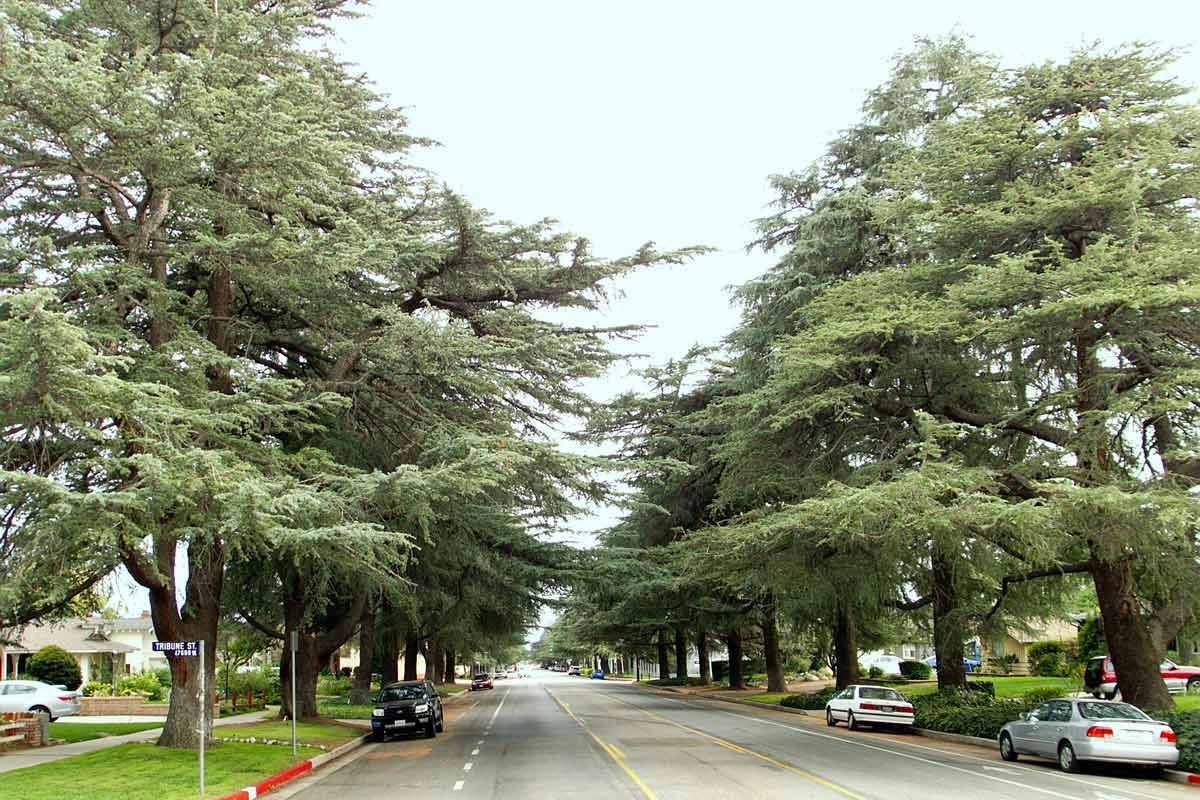
The Deodar cedar, or the Cedrus deodara, is an evergreen tree found in the western Himalayas mountains and eastern forests.
They are tall trees that grow up to 250 feet or higher in their natural habitat; often called graceful by coniferous tree experts.
The unique patterns on their branches and their vibrant colors make them a stunning part of any landscape.
They require full exposure to the sun and a minimum of six hours of direct sunlight. They are tolerant to drought and need acidic and moist soil.
The Deodar Cedar derives its name from the Sanskrit word ‘devadaru’, which means the ‘timber of gods’. This type of Cedar is categorised as a coniferous plant renowned for its ‘weeping’ habits.
The Deodar Cedar is also the National Tree of Pakistan and has also been awarded the Garden of Merit from the Royal Horticulture Society.
Despite its popularity, Deodar Cedars can also commonly be found in open spaces such as parks as evident from the picture above. Deodar is also a part of the four true cedar trees.
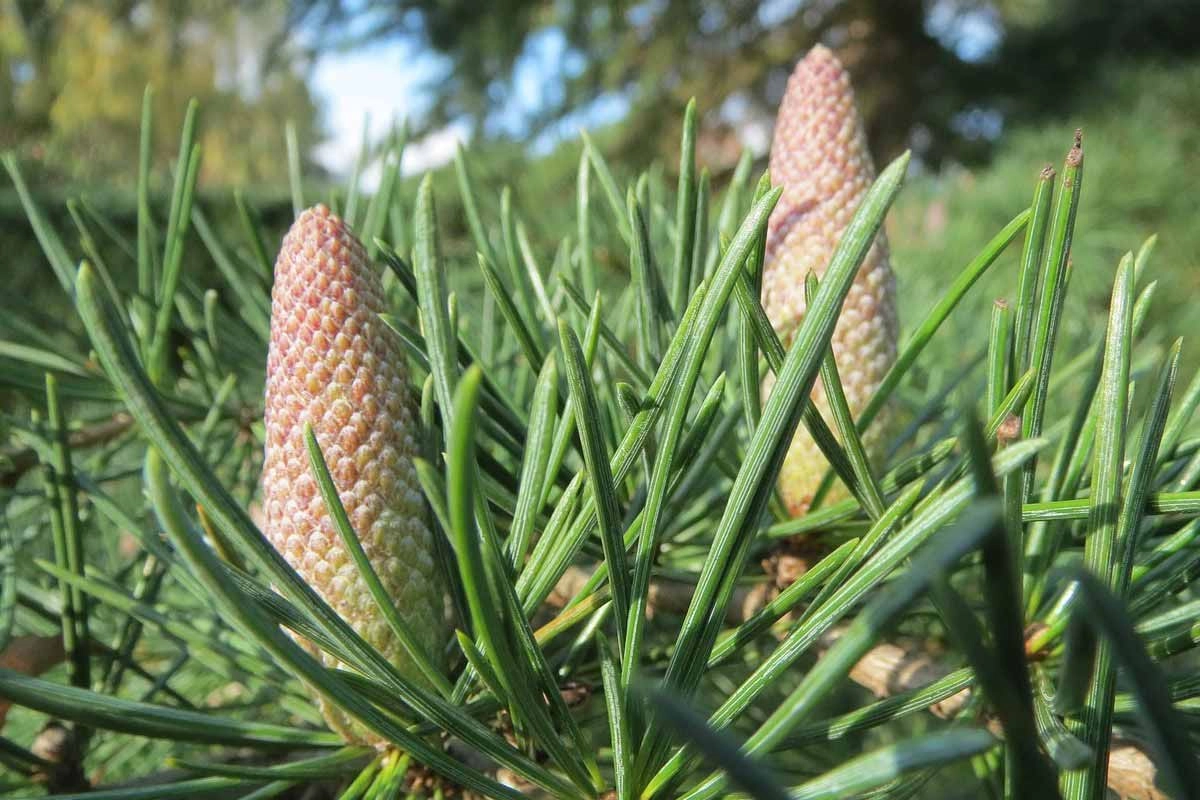
These trees have long coniferous needles that range between one to two inches. Deodar Cedars are available in greenish and deep blue colors, contributing to their striking physical appearance and the ability to be easily recognisable.
Deodar is also one of the 3 primary cedar tree hosts of cedar-apple rust, a contagious fungal disease that can be destructive for both cedars and apple trees.
Hence, it is advisable to plant cedar trees and apple trees apart to prevent spread of infection.
2. Cyprian Cedar (Cedrus Brevifolia)
As the name suggests, Cyprian Cedars can be found in areas of Cyprus, Turkey, and Syria. This is one of the most unique species of Cedars and is known for its incredibly tiny leaves.
The Cyprian Cedar requires an abundant amount of space to be able to grow. Cyprian is also another one of four true cedar trees.
It is a massive tree with dark green foliage. The female cedar has green leaves in the early years, which turn into a lighter shade of brown as they grow up.
They are evergreen cedar trees with leaves shaped like a needle. The leaves are arranged in a spiral and whorls. Their cones disintegrate and release the seeds,
They require well-drained soil with lots of moisture and continuous exposure to the sun. They are known for their sturdiness and ability to resist all kinds of conditions.
The Cyprian Cedar is usually compared to the Cedar of Lebanon as they have many features in common. However, these two types of Cedars also have different physical attributes.
For example, as mentioned above, the Cyprian Cedar has small leaves while the Cedar of Lebanon has long, elongated leaves.
3. Eastern Red Cedar (juniperus virginiana or Eastern Juniper tree or pencil cedar)
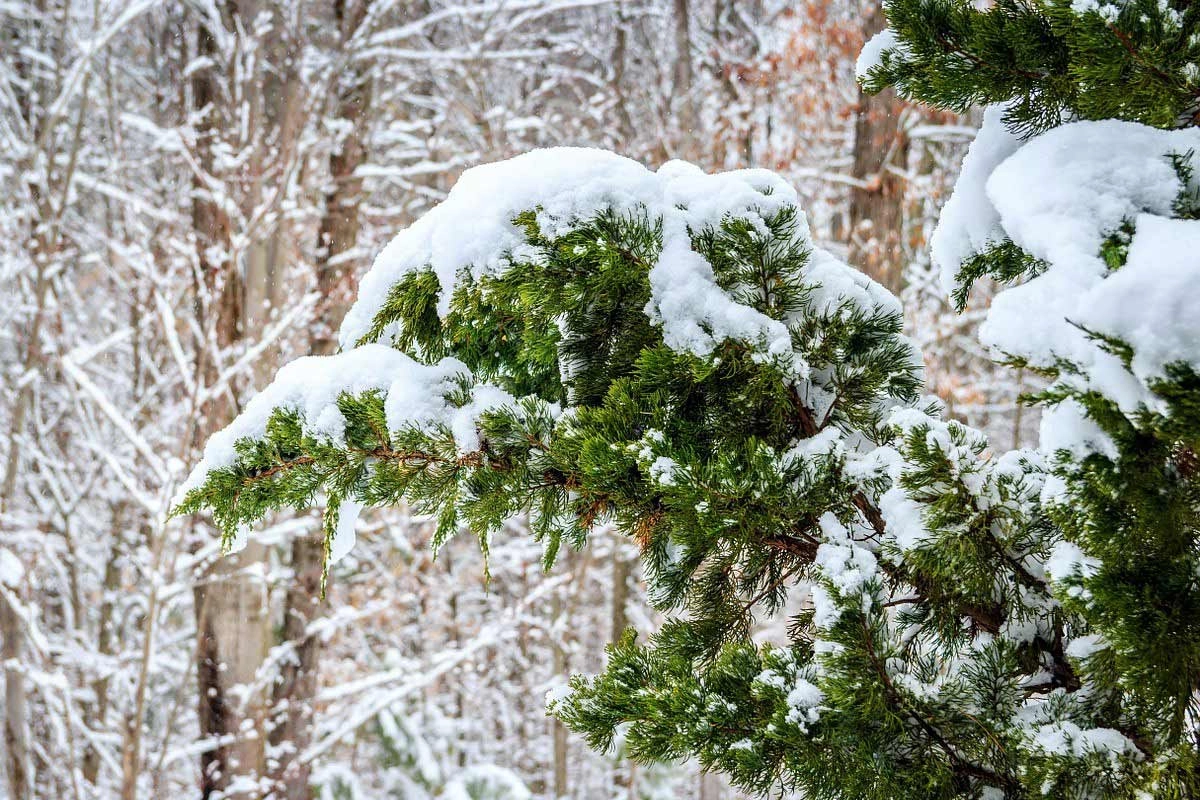
The Eastern Red Cedar, commonly found in the eastern regions of the United States, can grow to be as tall as 20 to 40 metres and belongs to the Cypress family.
On some rare occasions, they can assume a height of 100 meters or more. The wood of the Eastern Red Cedar is renowned for its longevity and versatility, and it is used to make wood flooring and furniture.
The Eastern Red Cedar Tree is known for its robust and woody smell, which is why it is called the ‘Aromatic Cedar’.
The wood from the Eastern Red Cedar is used to make a variety of organic oils with various uses. For example, people use these oils to prevent insect infestation by lining drawers, closets, and other pieces of furniture.
As a gardener, you should know that Eastern Redcedar is a terrific selection to your modern landscape design of your garden. However, the species is known to have negative effects on other species in the ecosystem as they over-populate like wildfire.
This dilemma is faced by many gardeners around the world. All we can say is; if you can control it, grow it. The rot-resistant heartwood it yields is well worth the challenge.
Just like Eastern Redcedar, there are many species that are considered cedar trees. However, since they don’t belong to the genus cedrus, they are not considered “true cedar trees”.
Hence, many cedar trees including the Eastern and Western Redcedars are considered false cedar trees or faux cedar.
These faux cedar trees are much like the true ones, looking just like ever-green coniferous trees with needle-like leaves.
4. Western Red Cedar (Thuja plicata)
The Western Red Cedar, commonly found in the northwestern regions of the United States and Canada, also belongs to the Cypress family (Cupressaceae). So you can technically consider it a cypress tree.
These Cedar trees can grow to be as tall as 200 ft or more. The Western Cedar can persevere through various climates and circumstances and can survive for more than 1,000 years.
Upon crushing the leaves of a Western Red Cedar, you will discover that they have a scent similar to that of a pineapple.
The tree also has very dense green foliage. The wood derived from a Western Red Cedar is decay and pest resistant, and it is mostly used for construction purposes.
Redcedar wood is often used for making cedar chest furniture.
5. Bermuda Cedar (Juniperus bermudiana)
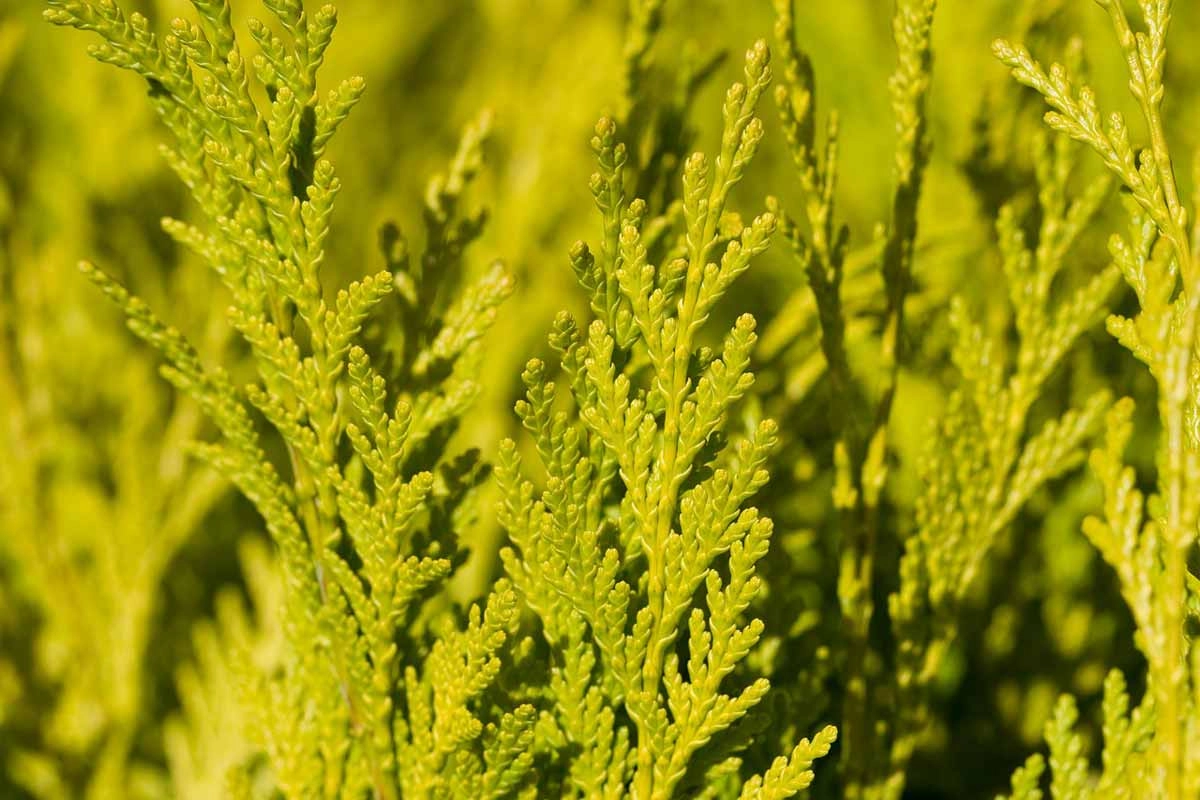
Bermudiana Juniperus is native to Bermuda. This species is often referred to as Bermuda juniper. This tree is a juniper native to Bermuda.
This cedar forest spanned most of the island, but it was devastated first by people and subsequently by a scale infestation.
More prominent examples of the Bermuda Cedar were known to exist in the past, while today, the Bermuda Cedar is an evergreen tree growing up to 15 m tall with a trunk up to 60 cm thick and a thin bark shed in long strips.
The foliage appears in blue-green sprays, with individual shoots 1.3–1.6 mm broad and four-sided in section.
6. Atlas Cedar (Cedrus atlantica or Glauca Pendula)
They are a statement piece in any garden due to their shades of silvery-blue or bluish-green leaves.
They would make your visitors stop and admire these beauties. When they have enough space, they grow blossom freely.
The Atlas cedar produces natural oil which stays off pests and insects. Cedar wood of atlas is quite popular and used in furniture.
Atlas Cedar trees are widely dispersed in the Moroccan Atlas Mountains and exhibit a sluggish to moderate rate of growth.
These Cedars have a variety of distinguishable physical attributes, i.e. they have a pyramid-like structure and their trunks usually have a diameter of five to six feet.
An Atlas Cedar can grow to be as tall as 40 to 60 feet, and it requires an ample amount of space to mature.
In order to grow fully and completely, Atlas Cedars need shade from the sunlight. It tolerates partial sunlight of up to fours in a day.
Atlas Cedars thrive best in damp and well-watered soils, and they can also withstand drought or harsh winds. They also grow best in Climates Zones 6 to 9.
7. Northern White Cedar (Thuja occidentalis)
The Northern White Cedar, commonly found in southeastern parts of Canada and the northeastern parts of the United States, is often referred to as the ‘Abor Vitae’, which means the Tree of Life.
The wood of the Northern White Cedar is very fragile and easy to work with. Thus, it can be used to create unique and beautiful pieces of furniture.
The Northern White Cedar, much like other types of Cedars, is resistant to infestations from pests, and it is also free of decay.
These two qualities make the Northern White Cedar a leading choice for constructing posts and other outdoor items.
Moreover, the Northern White Cedar is easily recognizable because of the creamy sapwood covering the inner area of its wood.
8. Alaska Cedar (Cupressus nootkatensis)
As the name suggests, the Alaska Cedar is readily available from the Pacific Northwest to Alaska, up until British Columbia.
The Alaska Cedar also referred to as the Yellow Cedar produces wood sturdy and dense wood. The wood is known for its striking yellow color and close-knit rings.
Many construction companies use the Yellow Wood Cedar to build bridges and durable panels. The famous Yellow Cedar Wood is also available in different colours, such as hues of cream and brown.
The tree also has very dense foliage which is dark-green and grows slowly.
9. Port Orford Cedar (Chamaecyparis lawsoniana)
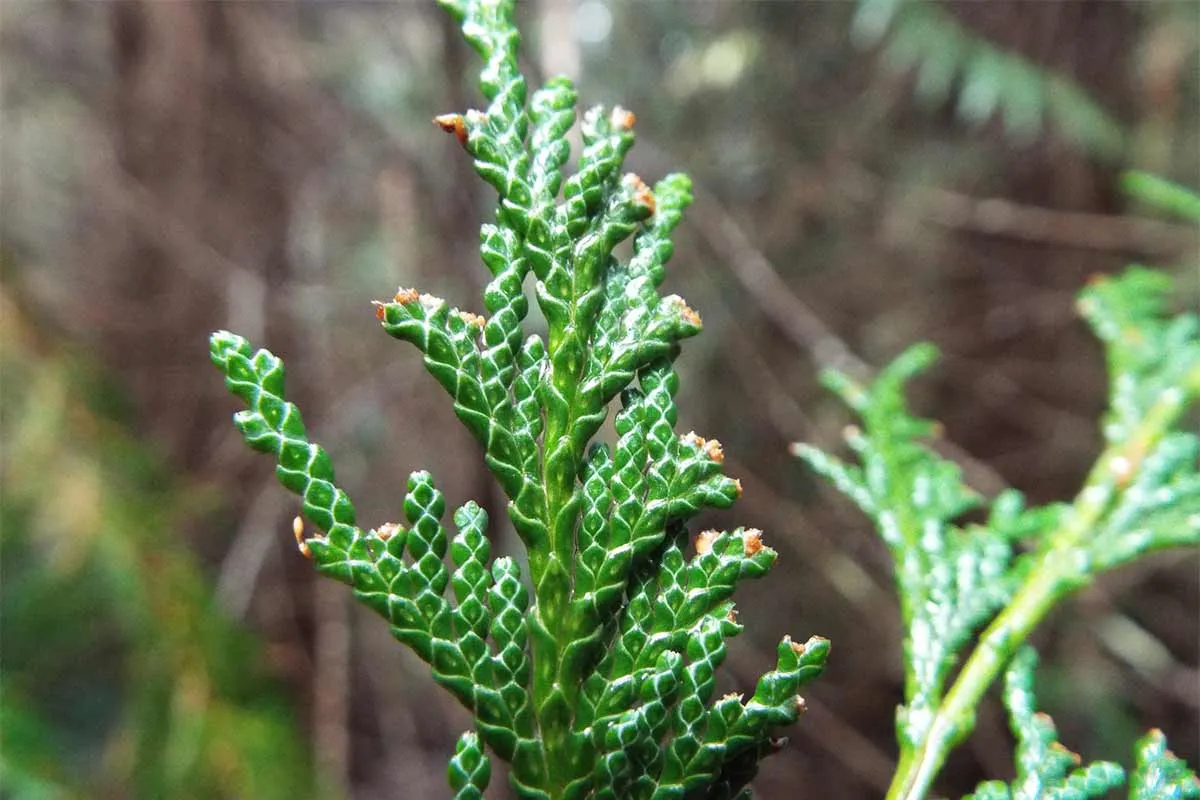
Port Orford Cedar, also known as the white Oregon Cedar, is a tree native to the pacific northwest of the United States. They may reach heights of over 200 feet.
In contrast, the sapwood has a white, yellow-brown color. This tree is also highly fragrant.
On somewhat flattened stems, the leaves are scale-like and 3-5 millimetres long, with a white underside.
Green at first and becoming brown in early fall (6-8 months after pollination), the seed cones are rounded in shape with a 7-14 millimeters diameter and six to ten scales.
3-5 millimetres long, dark crimson, becoming brown following pollen release in early spring, the male cones are 3-4 millimetres long.
In vertical stripes, the cedar bark is reddish-brown and fibrous to scaly. This tree is cultivated for its wood. They are not a common sight in domestic gardens due to their large size.
10. Spanish Cedar (Cedrela odorata)
The Spanish Cedar is native to the Central and South African regions.
The tree’s lightweight nature has made it a top choice for builders, and it is used in various construction plans to build tables, drawers, cabinets, and beautiful centrepieces.
This Cedar is also a leading choice for woodworkers, as its pest-resistant qualities can help avoid any such hazards.
It is easy to cut through the various straight-lined areas of a Spanish Cedar by machines. This tree is sustainable, versatile, and easy to maintain, so you can definitely consider investing in one.
11. Lebanon Cedar (Cedrus libani)
They are native to the Middle East and are a majestic part of Turkey and Lebanon. However, they are disappearing due to excessive tree-cutting as their wood is quite valuable.
They can also be found in the southern part of Anatolia where they have been a part of the wildlife for more than 2000 years. They grow well in cold winters and extreme temperatures.
The cedar tree trunk is erect and thick, and it grows up to 40 meters. The leaves are mostly green and small and used as decoration pieces in gardens.
Moreover, it is also the National Tree of Lebanon. Due to its popularity, the Lebanon Cedar is also grown in other parts of the world such as Afghanistan and Syria.
Much like other species of Cedars, this tree also has long leaves, a pyramid-shaped structure and is an evergreen conifer. The Lebanon Cedar can grow to be as tall as 40 meters.
The Lebanon Cedar also has a historical significance.
The wood produced by the Lebanon Cedar was used to make buildings in Israel.
According to a few sources, King David utilized the Lebanon Cedar to construct his palaces.
Solomon also used the Lebanon Cedar to build temples and palaces.
12. Eastern White Cedar (Thuja occidentalis or Arborvitae)
The Eastern White Cedar has light brown coloured Cedar Wood that is primarily found in the northeastern regions of the United States and the southern regions of Canada. The Eastern White Cedar has a variety of medical and medicinal benefits.
It can be used to treat asthma, cases of miscarriages, and convulsions. However, on the flip side, these trees are more prone to being damaged by pests and unfavorable weather conditions.
13. Incense Cedar (Calocedrus decurrens)
The Incense Cedar is commonly found in parts of the United States such as Oregon, California, and Nevada. The Incense Cedar can grow to be as tall as 200 feet and usually has a base of 15 feet. The bark of an Incense Cedar is a deep maroon color, and it has bright green needles.
The Incense Cedar has the ability to survive in harsh weather conditions and poor-quality soils. Moreover, it does not need to be watered frequently.
Benefits of Cedar Trees
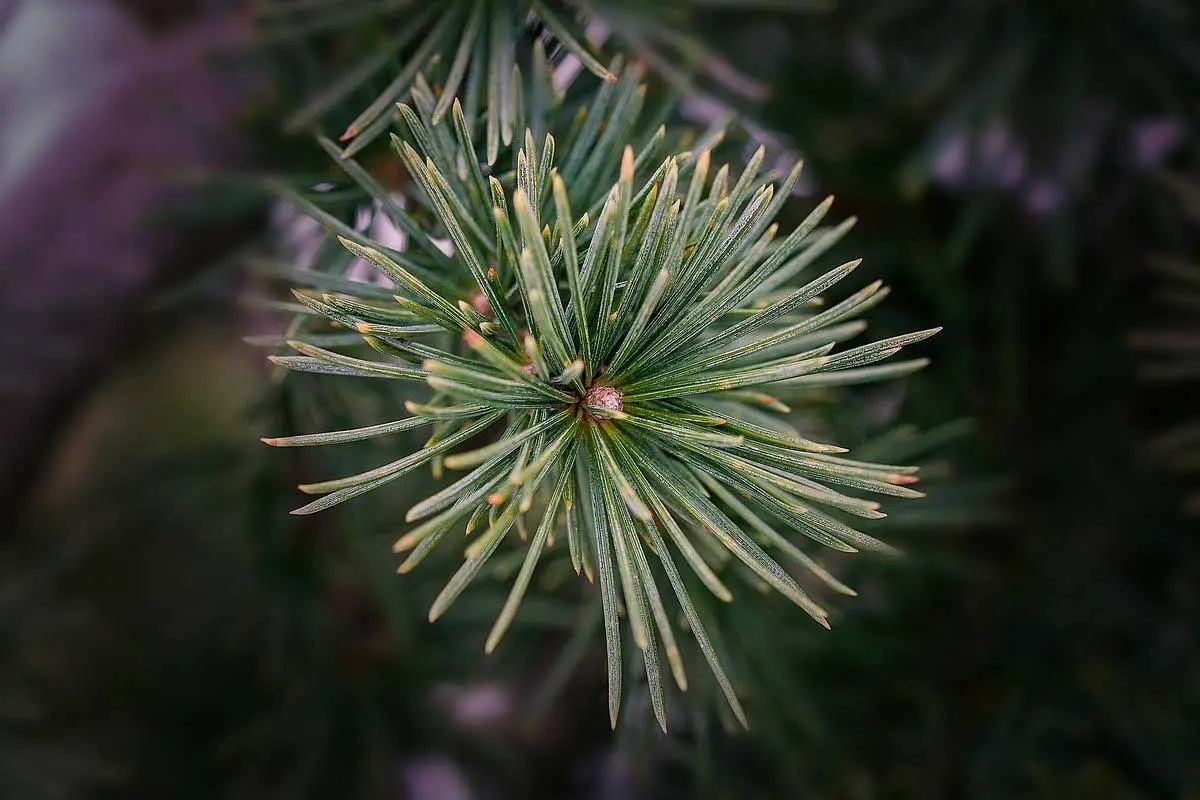
Cedars trees positively impact and contribute towards the environment we live in. Here are some benefits of Cedars:
1. Recreation and Scenery: Cedar trees are a marvel of nature and often provide a beautiful spot for relaxation.
2. Biodiversity: The different species of Cedars are home to a plethora of plants, animals, and insects. The way they serve as habitat to many organisms, allows for incredible biodiversity around them.
3. Soil and Water: Cedars take up vast spaces of land while maturing, and once they are fully mature, this helps prevent soil erosion.
Cedar forests can collect rainfall into their leaves and branches, which is ultimately absorbed into the ground and disperses back into the atmosphere.
4. Clean Air: The very existence of Cedars contributes to the betterment of air quality and helps reduce the emission of greenhouse gases.
Types of Cedar Trees you can plant at home
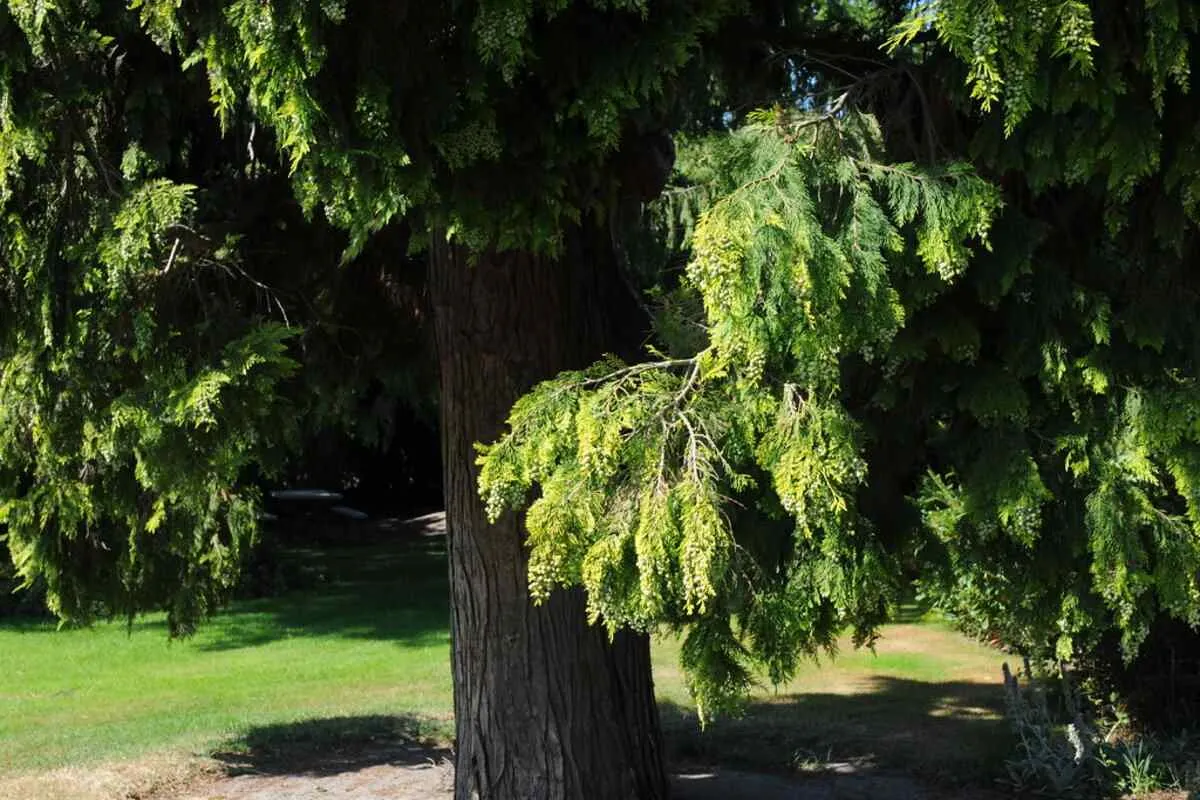
Cedar trees are not just limited to the mountains, but you can also grow them in your garden. Fortunately, there are several categories of these trees that do not grow too large.
These can be maintained in a home garden and easily looked after to prune and adjust their scale and length.
The western red cedar and eastern red cedar trees are used as ornaments due to their contrasting colors.
These striking trees have four main species, that further yield over hundred more cultivars. These cultivars are perfect for landscape planting and can change the look of a dreary garden to make it more lively.
They are available in lovely shades of green, yellow, blue, and cream cedar leaves. With the proper cedar tree care, they can grow to their full capacity,
Here is a list of them:
1. Prostate beauty
The Cedrus deodara is a Himalayan cedar that is known for its remarkable vivid blue foliage with green undertones. It spreads low and grows about 7 inches wide.
They can be kept small by regular pruning of the tips. Its beautiful color glows in the low and cool light of the sun in winter, giving it a bit of turquoise hue.
2. Glauca Pendula
The weeping atlas cedar will be a welcoming addition to the entry of your yard or garden. While they can get grow huge, they respond well to pruning.
You can prune them two to three times a year and focus on the hanging branches that droop thinly over the back.
You can remove their support once they reach their ideal height, where they will start weeping from.
It is a blue cedar that keeps its vibrant colors all year long. However, most people report that they have the brightest and deepest hues in the summer.
You can also pair these with other trees of autumn tones.
3. Monkinn Feelin’ Sunny
If you are looking for a plant that gives you the feeling of sunshine, then Monkinn or Cedrus deodara will be a great choice.
It is sold by the name Feelin’ Sunny which goes well with its bright demeanor and its yellow tips.
It gives a two-toned and dramatic effect to any garden. The cedar tree leaves that are exposed to more sunlight remain yellow, and the foliage in the shaded area stays green.
Some kinds are available in low-growing and shrubby forms, but others are upright and strong.
4. Gold Cascade
This Himalayan cedar initially spreads wide but as it grows, it gets more conical.
The rick yellow shades are similar to those of the Aurea, a huge Himalayan cedar. The cultivar can be kept flat and small than its natural state.
It gives a beautiful combination of blue and yellow with its light-colored cedar leaves.
It can make any landscape a piece of art. The creamy green foliage looks luxurious and appears even brighter in the sunlight.
5. Snow Sprite
They are much like the yellow-needed cultivars with their overall look. However, the Himalayan cedar is adorned with branches of white tips.
True to its name, this native plant of the Himalayas variety is ethereal looking and perfect for adding some elegance.
It grows at a steady speed, and like other cedars, it can be adjusted easily to slow its rate of growth. You can see which shape looks best on your snow sprite and prune it accordingly.
6. Hollandia
This Cedrus deodara is an upright cultivar with saturated green foliage. The deep green is the embodiment of all things fresh and lively.
It is not so easy to find a plant with the purest green leaves.
It does not require a lot of pruning as it is a dwarf and it is ideally kept in a narrow shape. It stands out in a collection and makes a statement.
7. Kenwith
This is one of the commonly known Cedrus brevifolia types, also known as Cypriot cedars.
They are special for their bristly and short needs and give it a scrubbier look than the extended needs of other cedar tree types.
Kenwith is not a fast-growing plant and is best kept in a container or a garden with rocks. The congested feature of this cedar makes it unique.
Their great quality is that they require low maintenance and can be easily grown by amateur gardeners.
However, they need the right climate to grow to their full potential.
They also have a combination of stunning pollen cones and huge seed cones.
8. Devinely Blue
These Cedrus deodara cultivars are named after a retired propagator, Bill Devine, to honor him.
It is not a pure blue shade, but the cedar tree leaves have a unique blue color, along with its slender and gorgeous needles.
If you place a Devinely Blue properly, it will not require any pruning.
It is a dwarf and has a sedated rate of growth. It can complement a small and intimate garden, where it can be placed as a centerpiece.
9. Sapphire Nymph
This Cedrus atlantica is another blue-colored cedar tree type that can be a part of your garden. This bright blue atlas cedar is a stunning plant, but it is extremely sensitive.
Sapphire Nymph can easily break as it is quite brittle. A light bump, fast winds, or even a ball-tossing on it can cause it to beak. So make sure you have a safe space to keep the plant.
Advantages of Using Cedar Wood
It is interesting to note that cedarwood, derived from various species of Cedars, also has many sub-types.
Cedarwood has aromatic features, making it a popular choice for building homes and the go-to choice for many contractors.
It is also used to make various things such as furniture, boat-building, and cigar boxes, to name a few.
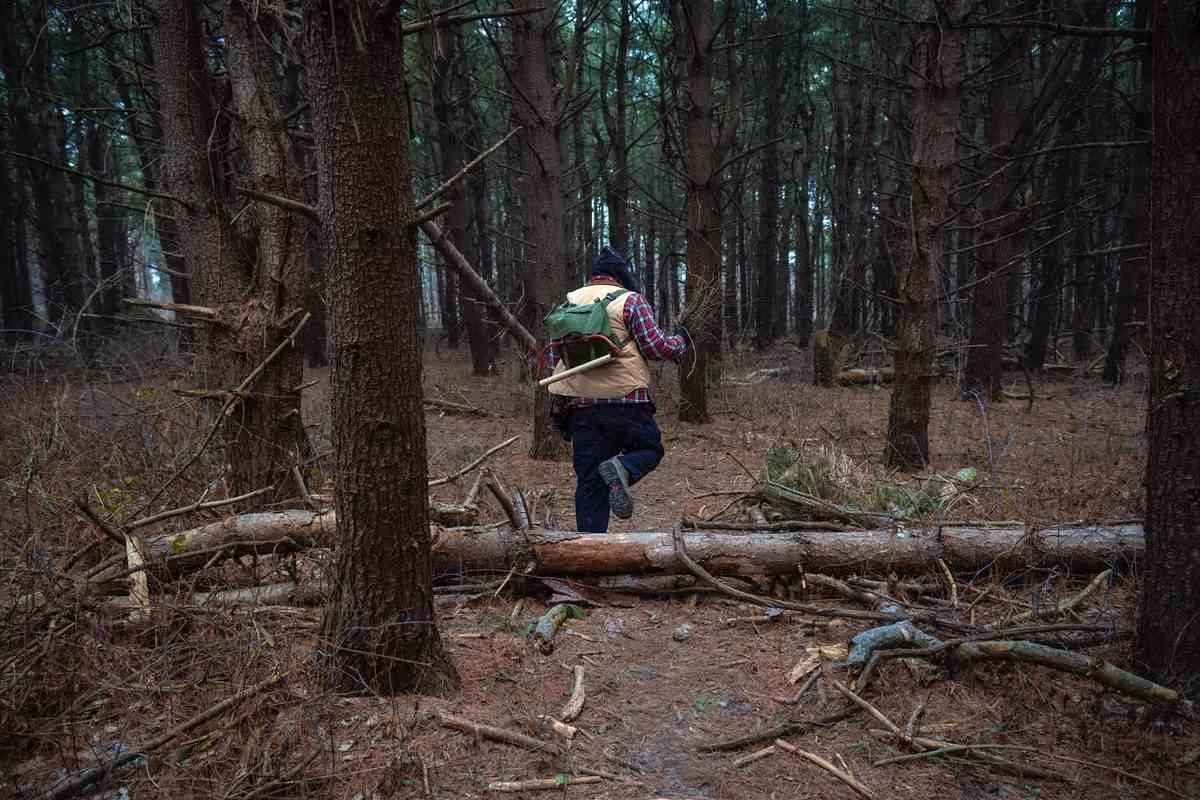
Throughout history, Cedars have supported settlements as they have grown and evolved.
Cedars are planted in hopes of forest reclamation, breaking strong winds, for economic benefits, and medicinal and spiritual purposes. Hence, there is an imminent need to protect these ancient trees.
Their windbreak capabilities may even be responsible for limiting soil erosion over the past few centuries.
There are many advantages of using Cedar Wood, and it can be utilized in many log projects.
The following are some benefits of Cedar Wood:
1. Cedar wood is durable.
Cedar grows well in moist climates, which means it has the ability to survive in unfavourable different weather conditions.
Even when the weather is harsh, Cedar does not shrink, swell up, or degrade in quality, making it an excellent choice for building exterior siding. It’s durability has allowed it to become the go-to material for making “cedar chests”.

2. Cedar wood is an excellent insect repellent.
Cedar Wood oil is able to terminate pests such as mosquitoes, ants, and cockroaches.
3. Cedar wood is beautiful with an excellent finish
Different types of Cedar have unique colour combinations which only need to be magnified and not altered.
You can easily enhance the durability and longevity of Cedar Wood by finishing it, and applying sealer can help maintain its natural color.
4. Cedar is sound repellent.
Cedar has the ability to absorb noise because it is a porous wood.
For this reason, Cedar Wood is used on the exterior and interior of homes and other buildings.
Is Cedar at the Brink Of Extinction?
Cedar trees are at risk of extinction, particularly the Atlas cedar and the Lebanon cedar.
Due to centuries of excessive grazing and harvesting, the wildlife has become affected. One can rarely spot any forests that are filled with giant cedars.
While a lot of these trees have been shifted to protected areas and efforts of reforestation, they are slowly gaining their population.
Regardless, climate change is evident and causes a huge pest outbreak in wild forests. The future of cedar trees is unsure as of now, but they continue to be one of the most striking green creatures.
We hope that you are now acquainted with different types of cedar trees and their qualities.
The colorful varieties can be a great addition to your home garden and turn a gloomy area into a lively one with their dramatic foliage.
Now do me favor, and plant a cedar tree near your home!
